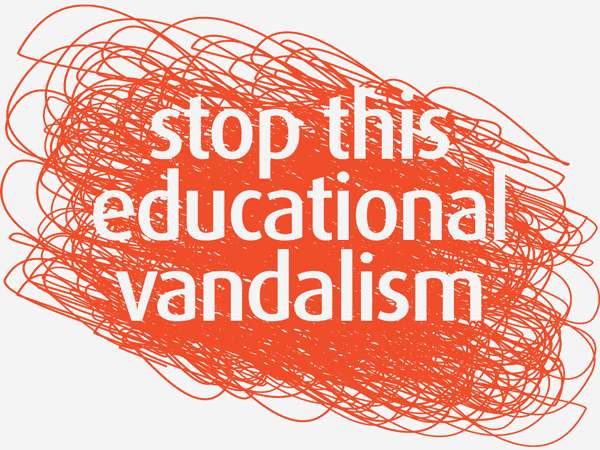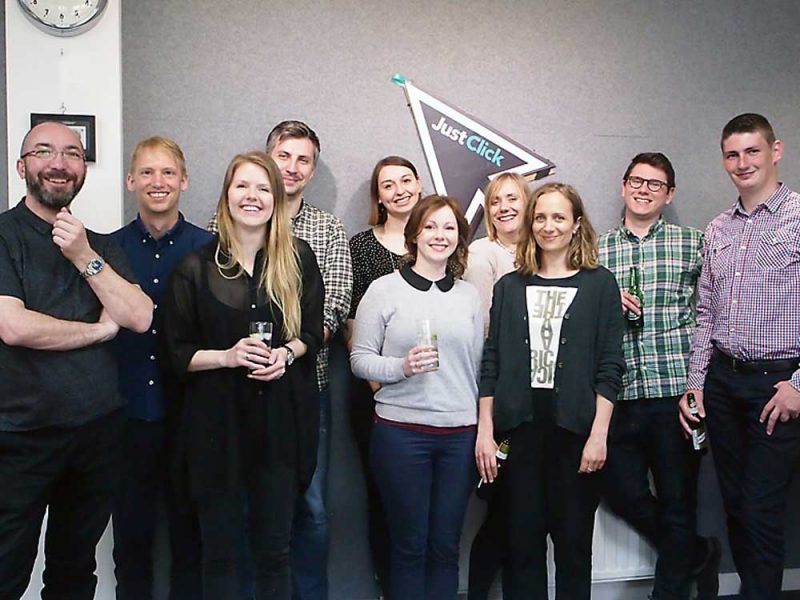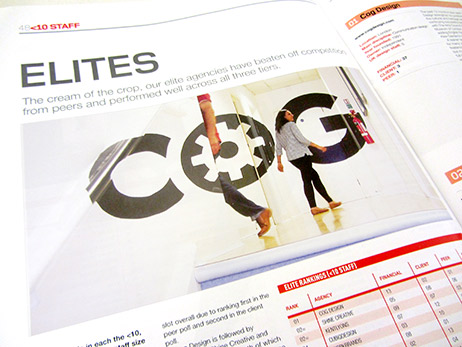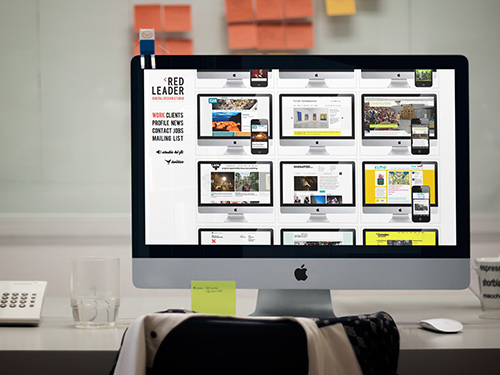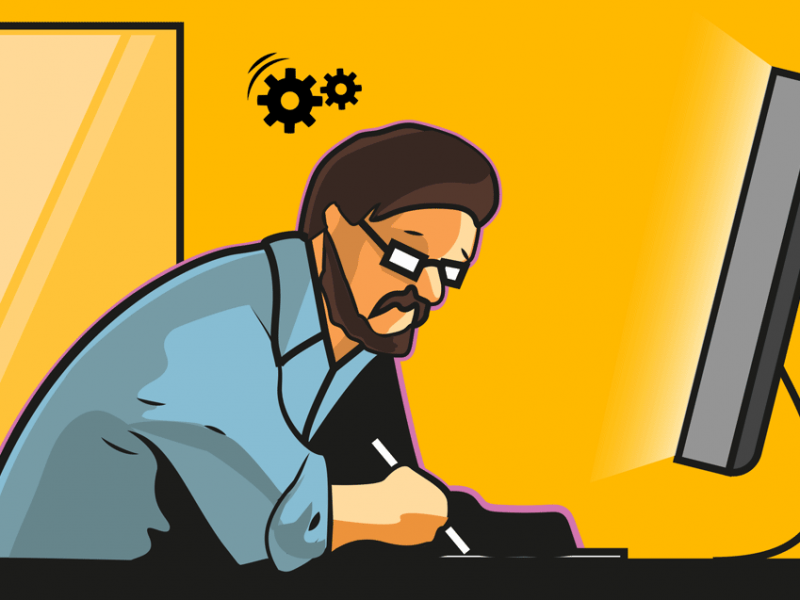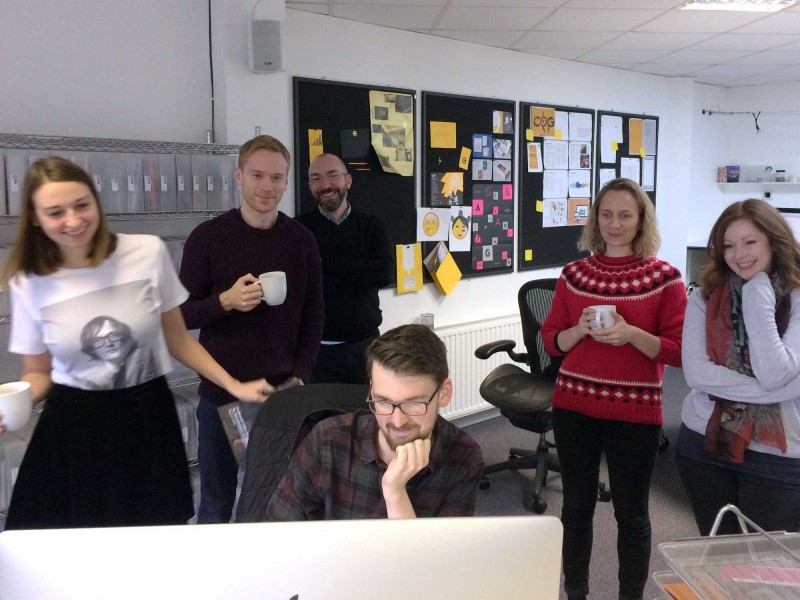What’s it like to be on the receiving end of your job application? Michael gives his top ten insights into how graduate designers (and anyone else) can make the most of their approach or application.
On the receiving end

When I left college I had no idea how to get a job, and I didn’t feel confident enough to try very hard, so I started working for myself. Within a year I had too much work so I employed someone and suddenly I was running a company, like a grown-up.
Twenty-five years later and I must have interviewed close to a thousand graduates, and I receive at least a dozen emails a week asking for advice, placements and jobs.
I always write back but it’s a big investment of time so I can be quite curt if they’ve made little effort. For everyone else, here are my top ten insights into how to make the most of your approach or application.

Michael Smith in 1990 when he’d just left college and wasn’t trying hard to get a proper job.
1. You’re contacting a person
This is always top of my list. Your email or letter will be read by a person, a human being with emotions and opinions, and a boss (probably), and work pressures, and home pressures and, and… Remember that, and use it to inform everything you say, write and do.
To start with, use their name. You might think you’re being ‘proper’ by writing ‘Dear Sir / Madam’ but they think you’re cutting and pasting the same email to dozens of people. Find out the name of the person who you need to contact (a quick phone call or a web search takes seconds) and use it.
While you’re at it, do get the name of the company right, you’d be amazed at how many people don’t even do that.
2. Focus on a few studios
It’s a complete waste of everyone’s time (especially yours) if you just email a long list of random studios with a generic approach. They will all be deleted as soon as they arrive.
Take your time, do your research (do more than just trawling a couple of blogs) and select half a dozen agencies. Don’t just pick the ones you’ve heard of, select agencies where you’d be a really good fit (based on size, structure, ethics, client list or just their visual style). Craft the perfect approach to them. Be brave and confident in your choices but don’t be delusional about your abilities. And if they don’t invite you in, try half a dozen more.
If you are applying for an advertised position then apply for that position, don’t just send a standard email approach. Explain why you’d be the perfect person for that role. And address any concerns that the employer might have – for instance, tell them that you might lack experience but you’d more than make up for it in enthusiasm; and mean it.
3. Show your workings
The person who receives your email doesn’t know how much research you’ve done or why you really want to work there, you need to tell them.
Tell people that you’ve kept an eye on their studio for years, that you really loved X project and you couldn’t believe how much thought went into Y project. Explain how much you’ve thought about it and why you know you’d be a perfect fit for that studio because you have an affinity with their ethics, or clients, or approach, or structure, or something.

4. You are being judged on everything
Someone once told me that it was unfair to criticise the quality of their grammar because I should judge them on the quality of their work. That person failed to understand that, as a designer, the design stuff is just one part of the job. You’ve also got to get on with colleagues and clients, articulate your thinking, understand the context of the work, turn up on time, make the tea, be a pleasure to spend time with, work within conventions, know when to challenge those conventions etc.
Any good employer is looking out for all of those things. They are building a picture of you using every piece of data they have available. And yes they will Google you and look through your social media feeds.
5. Don’t send an infographic claiming you are 100% anything
Almost every CV I receive has a graphic explaining how efficient that person is at using software. You may well be brilliant at using Adobe products but I’ve never met anyone who has used more than 50% of the features of InDesign or Photoshop so how can a recent graduate claim 100% proficiency?
I assume that everyone can use most software, or can pick it up in a few weeks; I’m looking for other skills and attributes. Mostly I’m looking for intelligence, enthusiasm and original thought and you don’t demonstrate that by copying everyone else’s CV examples.
Oh, and despite the anecdotes you’ve heard, fabulously clever packages are rarely more effective than a well-crafted approach and a cleanly designed CV and folio.
6. Employers really want to employ you
This may seem like a revelation but it’s just common sense. Employers aren’t trying to catch you out or trip you up, they are just trying to find out whether or not you are the person they’ve been looking for.
Every time I receive an approach I get excited that this person could be the one, the person that will bring a new dimension to our studio and become a reliable and trusted member of our team for years to come.
But of course, only a tiny percentage of people are the right fit for us. And the rest would be better off finding somewhere that would better suit them.
7. Most of your peers are rubbish
It’s intimidating to think that you are competing against dozens, maybe hundreds of people for every job; it’s a saturated market. But the good news is that it’s a market saturated by people who aren’t very good.
If we advertise a role then at least half of the applications are pointless – applying for the wrong job, missing the application deadline, getting our name wrong, not sending the stuff we’ve asked for, or sending 20Meg attachments of poor examples of work. We’ll dismiss them straight away, usually without even reading them.
Of those that are left, at least half will just be applying to any job with ‘design’ in the title; they won’t have made any effort to show why they really want to work here.
So, you’re already better than 75% of your peers!
8. Be enthusiastic
Don’t be embarrassed to be enthusiastic; there are no marks for being cool, aloof and unemployed. Get over yourself; it’ll make you more likeable and that’s a key factor in whether or not someone wants to spend 8, 10, 14 hours a day in your company.
9. Say thank you and stay in touch
If someone has taken the time to give you feedback, or to invite you in to meet, then be magnanimous enough to say thank you even if you didn’t get the result you wanted. It’s the polite thing to do and it can be a great way to maintain a personal connection with a potential employer. They must have been impressed enough to invest time in you so maybe they will recommend you to a colleague, or maybe they’ll think of you next time they have a role to fill. Or maybe they’ll just be a good person to know as your career progresses.
Timing can be crucial in securing a role. Make it easy for a potential employer to remember you and remember how enthusiastic you are about working with them. Don’t be weird and stalkery but there’s no harm in sending an occasional catch-up email (maybe praising a recent project; everyone loves flattery), or a Xmas card, or just ‘like’ the occasional tweet or Instagram post.

10. Every employer is different
It’s worth remembering that these insights are just my opinions and perspective. Employment isn’t an objective process, it’s often personal and it’s always skewed towards the particular need of each specific employer. You don’t have to agree with anything I’ve written but if you don’t then you’ll need to find an employer who shares your way of looking at the world.






